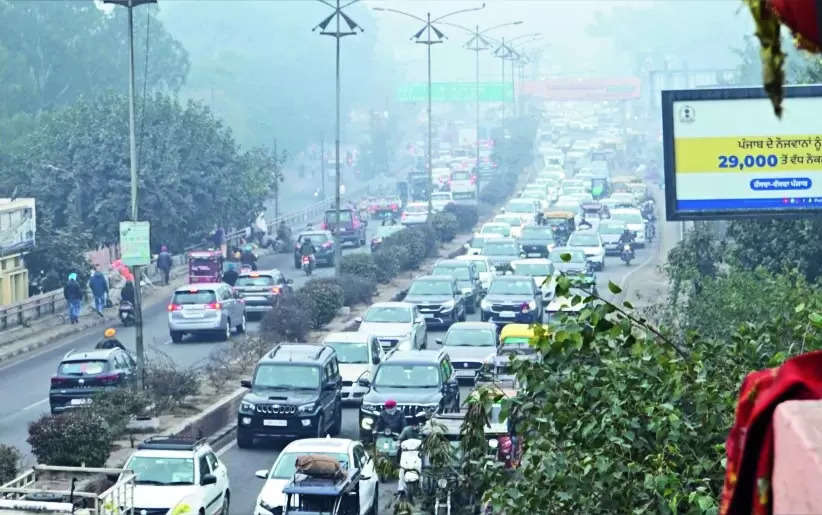Ludhiana: In view of the heightened risk of accidents due to the dense fog, Khanna Police has proposed to the National Highway Authority of India (NHAI) to paint fluorescent yellow strips on the National Highway to prevent such exigencies. The proposal was discussed in a meeting between the Khanna Police and the NHAI team on Thursday.
Khanna SSP Amneet Kondal said that in view of accidents due to decreased visibility, painting such a line on the highway in Khanna police district would be helpful. She added that this had also been done in Delhi. According to her, the Khanna police team had also discussed the need to install blinkers along the highway.
Punjab traffic adviser Navdeep Asija welcomed the proposal of painting a fluorescent yellow line on the National Highway. “Any visible aid to the driver is helpful. A line is the only thing which helps a driver drive in reduced visibility due to fog. White line on the road is bare minimum but a fluorescent line can be more helpful for people driving in the foggy weather,” he said. Asija added that normally, there should be several markers on the road for drivers but there was the problem of erased lines. Project director, NHAI, Ashok Rolaniya said that the proposal was under consideration. He added that they would do the needful as per site requirement for the safety of road users. NHAI officials said that they had recently installed 10 “accident prone area” signboards as part of road safety work in Khanna, besides installing 10 speed limit boards. They also said that seven blinkers had been installed in the area.
Meanwhile, the road safety assessment of Khanna police district from 2019 to 2021 unveiled 23 accident “black spots.” The report suggested that these comprised 17 recurring black spots with a history of accidents and six newly-identified areas reporting a surge in road accidents. “A total of 22 of these black spots, accounting for 95.65%, were located along National Highways passing through Khanna police district, underscoring the need for targeted interventions. To enhance road safety, addressing both persistent and emerging high-risk zones, especially along these National Highways is paramount,” the report said.
Khanna SSP Amneet Kondal said that in view of accidents due to decreased visibility, painting such a line on the highway in Khanna police district would be helpful. She added that this had also been done in Delhi. According to her, the Khanna police team had also discussed the need to install blinkers along the highway.
Punjab traffic adviser Navdeep Asija welcomed the proposal of painting a fluorescent yellow line on the National Highway. “Any visible aid to the driver is helpful. A line is the only thing which helps a driver drive in reduced visibility due to fog. White line on the road is bare minimum but a fluorescent line can be more helpful for people driving in the foggy weather,” he said. Asija added that normally, there should be several markers on the road for drivers but there was the problem of erased lines. Project director, NHAI, Ashok Rolaniya said that the proposal was under consideration. He added that they would do the needful as per site requirement for the safety of road users. NHAI officials said that they had recently installed 10 “accident prone area” signboards as part of road safety work in Khanna, besides installing 10 speed limit boards. They also said that seven blinkers had been installed in the area.
Meanwhile, the road safety assessment of Khanna police district from 2019 to 2021 unveiled 23 accident “black spots.” The report suggested that these comprised 17 recurring black spots with a history of accidents and six newly-identified areas reporting a surge in road accidents. “A total of 22 of these black spots, accounting for 95.65%, were located along National Highways passing through Khanna police district, underscoring the need for targeted interventions. To enhance road safety, addressing both persistent and emerging high-risk zones, especially along these National Highways is paramount,” the report said.
